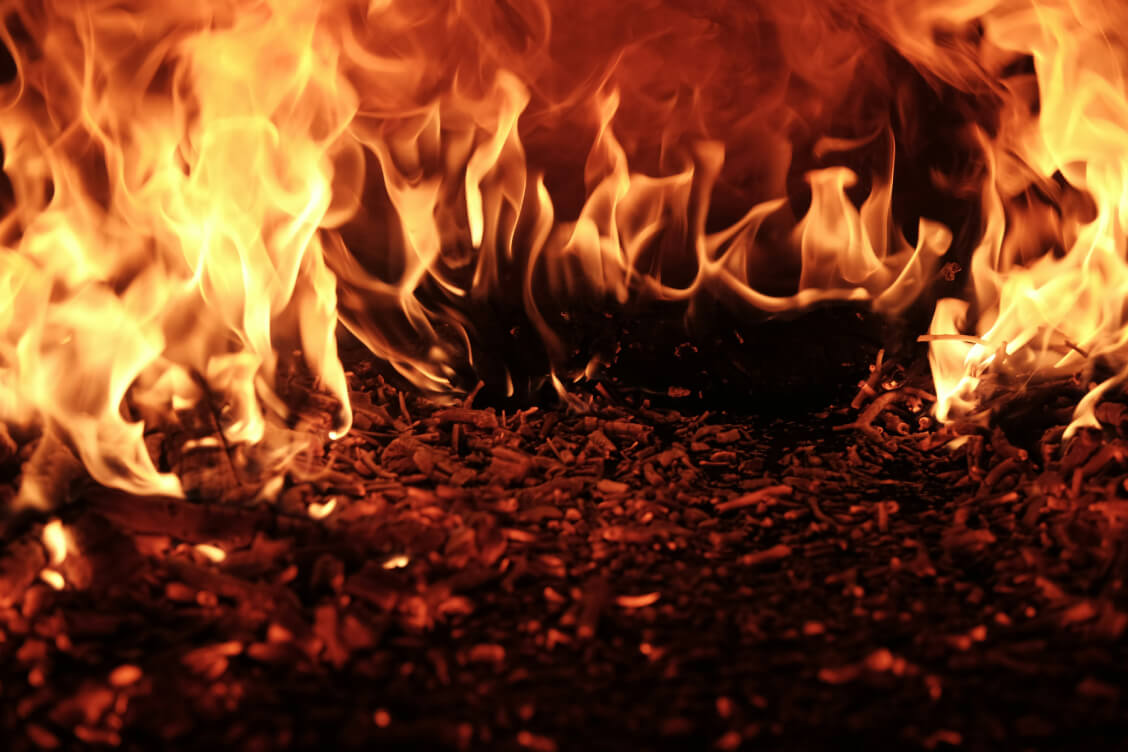Wildfires in southern Belarus, including radiation-contaminated area

September 12, Pozirk. At 6 am this morning, firefighters were working to contain a large wildfire covering an area of 14.5 hectares in the parts of the Homiel region most affected by radioactive fallout after the 1986 Chernobyl disaster, the emergency ministry reported.
Over the past day, two wildfires of 2,002 hectares were extinguished in the Homiel region’s Žytkavičy and Rečyca districts, along with smaller fires of 1,079 hectares in five other districts.
Dry vegetation was burning in Mahiloŭ region as firefighters reported at least seven wildfires. The Brest region’s authorities did not report any over the past day.
Belarus’ weather service has maintained the red flag wildfire warning for Homiel, Mahiloŭ and Brest regions for today.
Scientists say that fires put radionuclides back into the active state they were in 1986 immediately after the Chernobyl disaster.
“Radiation from this dust particle exceeds all safety limits. Suppose a plant containing plutonium ions burns, sending ash and dust into the air. A very stable aerosol is formed. The wind carries it wherever it blows. Scientists have found that dust storms transport and distribute isotopes such as cesium, strontium, americium and plutonium,” Siarhiej Biesarab, a radiation scientist, has told Pozirk in April.
Also read: Nearly 40 years after nuclear disaster, radioactive substances still dangerous, scientist says
- PoliticsŁukašenka to Putin: Belarus, Russia to settle “one or two issues”The material is available only to POZIRK+
- Society
- Politics, SocietyBelarus deports 3,000 foreigners since year's start – interior ministerThe material is available only to POZIRK+
- PoliticsŁukašenka to meet with Putin during working visit to RussiaThe material is available only to POZIRK+
- Politics
- Germany news, PoliticsGerman MP: Russian troops in Belarus threaten NATOThe material is available only to POZIRK+
- PoliticsInterior ministry brands former Kalinoŭski fighter, 31 others as extremistsThe material is available only to POZIRK+
- PoliticsŁukašenka: KGB crucial for Belarusian politicsThe material is available only to POZIRK+
- PoliticsReprisals: Belarusians returning home face border interrogationsThe material is available only to POZIRK+
- Germany news, PoliticsRecently freed Babaryka, Kaleśnikava arrive in GermanyThe material is available only to POZIRK+
- PoliticsBelarusian foreign minister cheers up Venezuelan counterpart amid tension in CaribbeanThe material is available only to POZIRK+
- PoliticsFormer FM Landsbergis critical of Vilnius’s decision to downgrade security for CichanoŭskajaThe material is available only to POZIRK+
- Politics, SecurityLatvia, Lithuania report a spike in undocumented migrationThe material is available only to POZIRK+
- Politics, SecurityUkraine to share Oreshnik’s location in Belarus with its partnersThe material is available only to POZIRK+
- PoliticsCichanoŭskaja’s office discussing security arrangements with LithuaniaThe material is available only to POZIRK+
- PoliticsAll-Belarusian People’s Assembly elects Siviec as chairman of the Constitutional CourtThe material is available only to POZIRK+
- Politics
- Economy, PoliticsŁukašenka’s assembly unanimously approves economic targets for 2026–2030The material is available only to POZIRK+
- Economy
- Politics, SocietyBelarusian Council for Culture: Belarus flooded with Russian contentThe material is available only to POZIRK+



